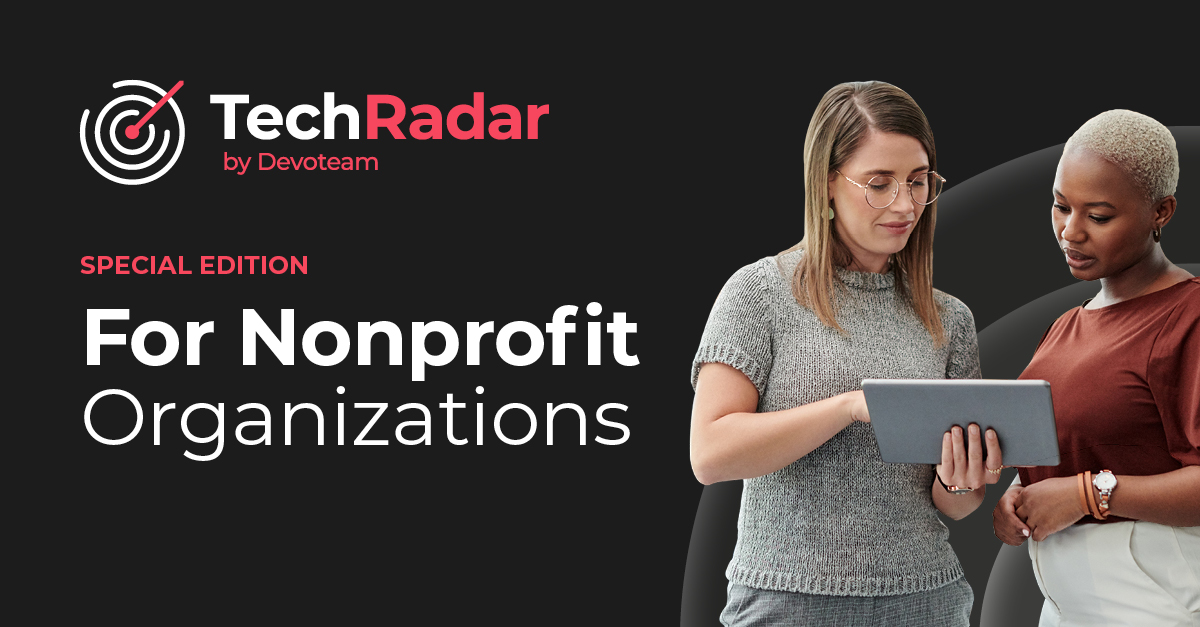Fundraising is the vital fuel of purpose-driven organisations that supports their sustainability, growth, and their mission overall.. However, ever-changing factors like donor preferences, evolving technologies and economic fluctuations make the fundraising landscape tricky to navigate. A report by the European Fundraising Association states that in 2022, 32% of nonprofits saw a decrease in donation amounts from individual supporters. As the difficulty of securing funds increases, the more important it is for nonprofit organisations to adjust their fundraising approach to focus on innovation, transparency, and adaptability.
Unlike grant management, fundraising involves securing funding from a number of diverse resources, which comes with its own set of unique challenges. For instance, handling donations from various channels creates a large web of data that requires robust systems to capture, store, track, and acknowledge each monetary gift. By implementing these systems, nonprofits can ensure the proper management and allocation of resources and gain insights that can improve the efficiency and efficacy of future fundraising campaigns.
In this section, we will explore a carefully curated selection of innovative technologies, each designed to streamline the fundraising process. These cutting-edge solutions encompass diverse aspects, ranging from efficient data management and fostering deeper donor relationships to resource allocation optimisation and crafting targeted social campaigns that amplify awareness, offering a comprehensive view of the dynamic landscape of nonprofit fundraising innovation.
Alteryx
Fundraising efforts are critical to the sustainability and longevity of any nonprofit, but often times, the key difference between a campaign that brings in vital donations and one that falls flat comes down to insights (or the lack thereof). Past fundraising rounds can provide a wealth of insight into what motivates donors to give and what simply doesn’t work – but only if you can make sense of the data.
During fundraising, nonprofits deal with large volumes of data, such as donor information, contribution histories, campaign results, event attendance, and more, across multiple sources. This data arrives in disparate formats and structures, making it challenging to derive meaningful insights. That’s where Alteryx comes in. Alteryx is an easy-to-use, self-service data analytics software platform that enables users to easily prep, blend, and analyse data all in one place.
Alteryx functions by facilitating the extraction, transformation, and loading (ETL) of data from various sources. It empowers nonprofits to combine, clean, and transform their data into a unified and coherent dataset. Using machine learning capabilities, this enhanced dataset can then be fed to a business intelligence tool (such as Tableau and Power BI) and analysed to uncover trends, correlations, and insights that guide informed decision-making. For example, by identifying past donor trends, nonprofits can create highly focused campaigns that target donor segments that donated multiple times in the past and will likely donate again.
Finally, another reason we recommend Alteryx is its accessibility to NGOs that have limited budgets and/or technical expertise. Alteryx is a highly intuitive and easy-to-use tool and offers licences to nonprofits at a significantly reduced rate, making it an ideal solution for organisations looking to complete data processes quickly and efficiently.

Marc Schønwandt, Data Principal Consultant Devoteam Denmark
Tableau
If Alteryx is the first stop in data preparation and processing, then Tableau can be looked at as the next step that brings a new level of insight and usability to your data. Tableau is a powerful data visualisation and business intelligence (BI) software that helps users understand, analyse, and visualise their data in a meaningful and interactive way, making complex data sets easier to comprehend, explore, and communicate.
In terms of optimising fundraising activities, Tableau can be used to seamlessly connect to various data sources (donor information, campaign results, etc.), making it easier to understand and leverage for successful fundraising campaigns. For instance, this user-friendly software enables users to create interactive visualisations, graphs, and dashboards that highlight insights like donation patterns, donor engagement, and campaign effectiveness that can be leveraged to identify trends and segment donors. Additionally, Tableau’s real-time data connectivity ensures that nonprofits can make informed decisions based on up-to-the-minute information, enabling them to quickly and effectively communicate the outcome of their work to supporters and potential donors.
Similar to Alteryx, Tableau also offers discounts on subscription licensing for nonprofits and further empowers NGOs through the Tableau Community, which provides free expertise to help organisations make sense of their data. Between the two tools, Alteryx is the ideal choice when the importance of data analysis relies on the direct manipulation of a data source rather than aesthetics. For user-friendly output with captivating visualisations, Tableau is the best choice. However, the combination of Alteryx’s data organisation with Tableau’s visualisation prowess is the ideal solution that offers organisations the best of both worlds. But if you’re looking for one tool that does it all, our next recommended technology may be the option for you.

Simon Taisbak, Data & Analytics Consultant, Devoteam Denmark
Power BI
You can think of Power BI as a combination of both the data manipulation and organisation of Alteryx, with the dynamic data visualisation capabilities of Tableau. Developed by Microsoft, Power BI is a powerful business intelligence (BI) tool that enables users to gather, analyse, and illustrate data, providing a comprehensive platform for turning raw data into actionable insights and compelling visualisations.
At its core, Power BI facilitates seamless data connectivity, enabling nonprofits to effortlessly integrate various data sources, from basic Excel spreadsheets to databases to cloud services. Additionally, like Tableau, Power BI enables data visualisation and is capable of transforming large datasets into interactive charts, graphs, maps, and interactive dashboards that consolidate diverse visuals onto a single page, delivering easily accessible, holistic insights such as donation trends, campaign metrics, etc. Among the key benefits of the platform are its collaborative features, which enable users across the organisation to collaborate on reports and dashboards and share them among colleagues and key stakeholders, as well as Power Query, the data connectivity and data preparation technology that allows users to easily import and transform data from within Microsoft products, including Excel, Analysis Services, Dataverse, and more.
Like both Alteryx and Tableau, Power BI offers subscription licensing to nonprofits at a discounted rate. However, it’s worth mentioning that although the solution is reasonably user-friendly (particularly for those already familiar with Excel), some aspects of the tool do require a basic knowledge of coding to be utilised to their full extent. For this reason, Power BI may be a better fit for organisations that already have in-house expertise at their disposal.
That said, for nonprofits who want greater reporting power and analytical capabilities without the need for multiple tools, Power BI is a versatile tool that can help transform the way organisations achieve greater impact and efficiency within fundraising efforts and the operation as a whole.
A Look Forward: The Transformation of Fundraising Through Web 3.0 and the Blockchain
These days you would be hard-pressed to find someone who hasn’t at least heard of the blockchain and cryptocurrency. However, few people fully understand the potential of this developing technology. As blockchain technology and Web 3.0 have become increasingly relevant topics in the public sphere, new ideas of innovative applications for the technology beyond revolutionising the finance sector have begun to take form. Among these up-and-coming concepts is the use of the blockchain as a vehicle for fundraising for nonprofit organisations.
The blockchain is defined as a “decentralised, distributed, and public digital ledger.” This decentralised network maintains a permanent record of transactions that are secure, immutable, and transparent. In other terms, the blockchain is a way of transferring assets without middlemen. Instead, the blockchain relies on Smart Contracts, tamper-proof programs that automatically run on a blockchain network when predefined conditions are satisfied. By using this technology in fundraising, organisations can effectively eliminate the potential for internal corruption and any risk of funds being misused or misappropriated. Simply put, organisations and donors will know exactly where their funds are going in real time.
One particularly adept use case where blockchain potential really shines is in the donation of funds across borders. Traditional cross-border transactions often involve high fees and delays due to intermediaries, but with blockchain, transactions can be conducted directly between the donor and the nonprofit, reducing costs and time delays. Additionally, since the blockchain ledger is immutable, it provides an auditable trail of international donations, making compliance with international regulations more manageable.
However, despite its promising potential, the widespread adoption of blockchain for fundraising faces significant challenges. The lack of set regulations and the absence of unified global standards pose significant hurdles to its macro-scale implementation. Because different countries have varying approaches to regulating cryptocurrencies and blockchain technology, nonprofits operating across borders are particularly subject to greater complexities and legal uncertainties. Nonetheless, it is essential to keep prominent blockchain networks, such as Ethereum and Cardano, and specific cryptocurrencies like Ripple (XRP) on the radar as regulations evolve and improve over time. As it is, blockchain technology remains a tool with immense promise to help nonprofit organisations create more accountability and efficiency within their fundraising ecosystem.

Eslam Moustafa – Global unit Ops Manager Innovative Tech – Devoteam Portugal
